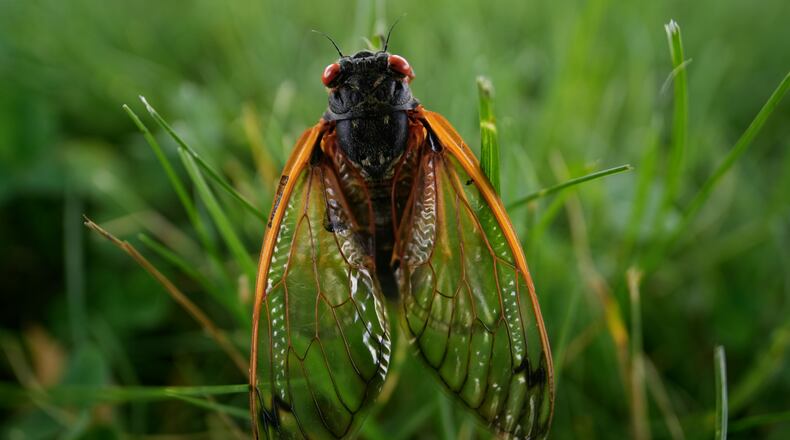“While there are annual cicadas throughout the world that emerge each year, periodical cicadas are a unique group of insects found only in eastern North America,” ODNR said in a news release.
They emerge after living underground for periods of either 13 or 17 years. And they return in massive numbers.
Southwest Ohio will likely see them in late May or when the soil routinely reaches 64 degrees and above.
“We encourage everyone to take this unique opportunity to appreciate and learn more about these fascinating native forest insects and their value in naturally functioning ecosystems,” said Tom Macy, forest health program manager for the ODNR Division of Forestry. “With appropriate protection and care for small and newly planted trees and shrubs, residents can safely enjoy this incredible natural spectacle as it unfolds across southwest Ohio in 2025.”
Only 4 of 15 recognized broods of periodical cicadas are in Ohio.
Counties that will experience the emergence of Brood XIV include:
- Montgomery
- Hamilton
- Clermont
- Brown
- Adams
- Scioto
- Lawrence
- Gallia
- Butler
- Warren
- Clinton
- Highland
- Ross
- Pike
- Jackson
- Washington
- Greene
Some of the northern edge counties, such as Montgomery, will not see as heavy an emergence as others.
Much of the Dayton area had its main 17-year cicada emergence (Brood X) in 2021. Brood X also hits Montgomery and Greene counties, as well as areas to the north, including Clark, Miami, Darke and other counties further north to Lima and Findlay.
ODNR says periodical cicadas emerge when the soil temperature reaches 64 degrees, which typically occurs in the second half of May. They will remain active for three to four weeks as they focus on mating and reproduction.
Male periodical cicadas produce a deafening chorus of calls to attract females. Once mated, female cicadas deposit their eggs into the branches of trees and shrubs.
Cicadas are sometimes unsettling as they fly in the air and occasionally may run into a person, pet or structure. They are harmless, however.
“They are also a valuable food source for many native wildlife including birds, mammals and fish,” ODNR says. “While egg-laying by female cicadas can cause ‘flagging’ on trees and shrubs (death of branch tips, from the egg-laying site to the end of the branch), there is little to no impact on established, otherwise healthy plants.”
BE A DOCUMENTER
People are sought to help document the cicada emergence. Use the hose wishing to participate in documenting this event are encouraged to use the Cicada Safari citizen science app at cicadasafari.org to report their sightings, thereby contributing to ongoing research efforts.
CICADA FACTS
- Only the male cicadas sing because of their sound-producing structures called tymbals on either side of the abdomen
- A female cicada will have a groove in which is found the ovipositor and the male’s abdomen will terminate with a square shaped flap
- Cicadas do not eat solid food, but do drink fluids to avoid dehydration
- They do not sting or bite humans, and they do not carry diseases
- They can harm young trees when female cicadas lay their eggs in the tree’s new growth. Spraying will not kill incoming cicadas: If you have a young tree, you can loosely wrap the branches with cheesecloth to keep the female from laying her eggs
- Pesticides are not effective at controlling periodical cicadas. They are not pests and do not need to be killed
SOURCE: cicadasafari.org
About the Author
